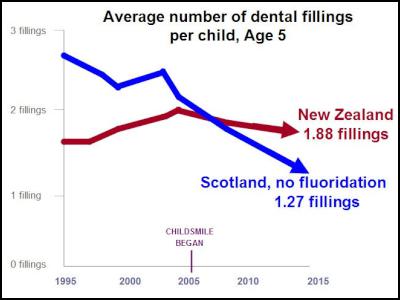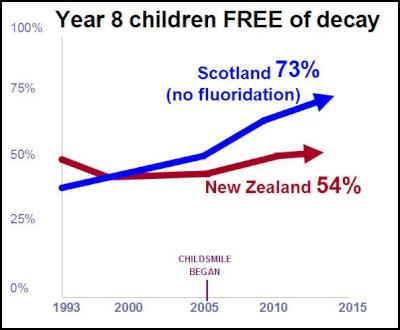An Opportunity to Stop Fluoridation Nationwide
PRESS RELEASE
New Fluoride Legislation: An Opportunity to Stop Fluoridation Nationwide
Fluoride Free New Zealand (FFNZ) will present evidence to the Health Select Committee when the issue is discussed in the coming months. They maintain that the evidence shows that fluoridation is outdated, unsafe and ineffective and that excellent public dental health programmes in non-fluoridated countries around the world are hugely successful. FFNZ will argue that New Zealand should follow these international modern examples and that the Health Select Committee members should come to the issue with an open mind.
This legislation would force local councils to spend 1 billion dollars over the next 20 years, in addition to the costs already incurred every year by councils who currently fluoridate. FFNZ says this is unacceptable, particularly at a time where we desperately need money for other vitally important things.
“We think it is time the Government got up to speed with fluoridation,” says Mary Byrne, media spokesperson for FFNZ. “They are currently relying on a report which uses data from an out-dated survey. The latest New Zealand studylooking at dental health and the NZ School Dental data both show that for the vast majority of children there is no difference in decay rates between fluoridated and non-fluoridated areas.
The move to shift responsibility for fluoridation to the District Health Boards is being criticised as a ploy to remove choice from local communities. DHBs are contractually obligated to carry out Ministry of Health policy, so critics see this as a move towards Central Government control and mandatory fluoridation “by the back door”. Only two other countries, Ireland and Singapore, have nationwide mandatory fluoridation. Only 4% of the world still fluoridates their water.
Associate Health Minister Peter Dunne says, "Decisions would be based on the assessment of health-related evidence and local needs." Ms Byrne responded by saying, “DHBs do not possess any health-related evidence other than dental decay rates. Overseas research is providing an increasing amount of evidence that there is serious harm to the body from swallowing fluoride, particularly over the long term and for people particularly sensitive".
Ms Byrne says, “There are dozens of problems with fluoridation, but two reasons at the top of the list are that we now know fluoride is an endocrine disruptor, damaging thyroid function; we also now know that fluoride is neurotoxic (affects the brain). Studies are now being conducted by the prestigious US Government National Toxicology Program to determine at what dosage damage occurs. Adding it to the drinking water is reckless in the extreme.”
Only 23 councils out of 67 in NZ currently still have fluoridation; a number have stopped since 2011. It remains to be seen how the DHBs will instruct the councils that do not want fluoridation - to pay hundreds of thousands of dollars to start it - and if members of those communities will have any real input in the decision-making.
According to Fluoride Free NZ, international programmes in non-fluoridated countries like the CHILDSMILE programme in Scotland are what NZ should adopt. Scottish kids now have better teeth than Kiwi kids. CHILDSMILE includes supervised tooth-brushing in schools, dental check-ups for all children by a dental health professional at least every six months, as well as brushing and sugar education for children and parents. The programme has reduced decay rates, cut general anaesthetic dental surgeries in half, saved millions of pounds and is lauded as a huge success. Wales, Japan, Denmark and other countries have similar programmes.


“Many children in New Zealand are suffering from severe dental decay. Statistics obtained under the Official Information Act show that fluoridated and non-fluoridated areas have the same rates of decay, and the same rates of severe decay requiring surgery. These statistics prove that fluoridation does not work, and that children who need help are being left behind. We also know that around 30% of children have some form of dental fluorosis, which is the first outward sign of fluoride poisoning. Obviously, we need to reduce fluoride exposure, not increase it,” says Ms Byrne.
It is expected the issue will be considered by the Health Select Committee early next year and the public will be invited to submit.
ENDS


 Gordon Campbell: On Why Leakers Are Essential To The Public Good
Gordon Campbell: On Why Leakers Are Essential To The Public Good ACT New Zealand: ACT New Zealand Celebration Brunch - David Seymour's First Speech as Deputy PM
ACT New Zealand: ACT New Zealand Celebration Brunch - David Seymour's First Speech as Deputy PM NZ Police: Operation Purple | Anti-Social Road User Gathering In Levin
NZ Police: Operation Purple | Anti-Social Road User Gathering In Levin New Zealand Defence Force: The Latest Update On The HMNZS Manawanui Response
New Zealand Defence Force: The Latest Update On The HMNZS Manawanui Response NZCTU: NZCTU Release Detailed Budget 2025 Analysis
NZCTU: NZCTU Release Detailed Budget 2025 Analysis Department of Conservation: DOC Reveals Surprising Toilet Paper Stats
Department of Conservation: DOC Reveals Surprising Toilet Paper Stats NZ Government: Consultation Opens On Sweeping Overhaul Of Primary Sector Regulations
NZ Government: Consultation Opens On Sweeping Overhaul Of Primary Sector Regulations


